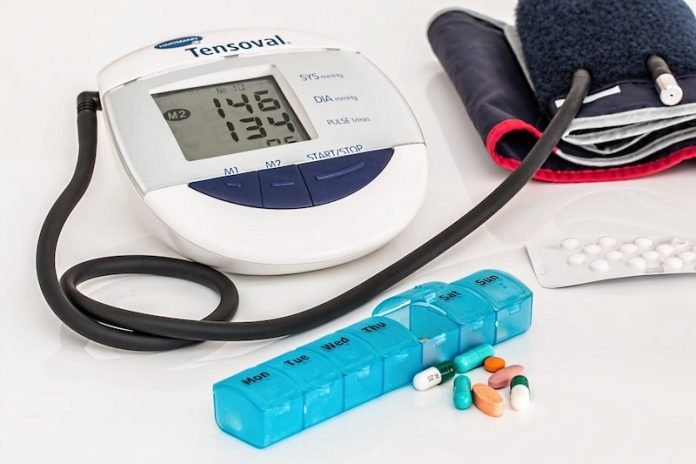
In a new study from Kaiser Permanente Washington, researchers found adults who needed to track their blood pressure regularly to confirm or refute a hypertension diagnosis preferred monitoring blood pressure at home versus at a clinic, kiosk or with a 24-hour wearable device.
According to the American Heart Association, about 1 of every 2 of U.S. adults has high blood pressure, or hypertension. More than one in three adults with high blood pressure might not know they have it.
High blood pressure is defined as having a systolic pressure (the top number in a reading) of 130 mm Hg or higher, or a diastolic pressure (the bottom number) of 80 mm Hg or higher.
24-hour ambulatory blood pressure monitoring devices, worn day and night to take continuous blood pressure readings, are generally considered the “gold standard” for out-of-office measurement to determine a diagnosis of high blood pressure.
However, blood pressure measured on a home device, with a traditional blood pressure arm cuff, can be a more practical and convenient approach.
In the study, the team examined adherence and acceptability of different blood pressure measuring methods among 510 adults who had elevated blood pressure yet had not been diagnosed with high blood pressure.
Participants were randomly assigned to one of three groups for determining a new diagnosis of hypertension: clinic measurements, home monitoring or kiosk blood pressure monitoring.
Researchers found overall acceptability was highest for the at-home group, followed by the clinic and kiosk groups. 24-hour ambulatory blood pressure monitoring was the least acceptable option.
Participants were least likely to adhere to the monitoring regimen in the kiosk group.
Adherence was more than 90% among those in the home testing group; more than 87% in the clinic group; nearly 68% in the kiosk group; and 91% for 24-hour ambulatory monitoring among all participants.
The team says home blood pressure monitoring was the most preferred option because it was convenient, easy to do, did not disturb their daily personal or work routine as much, and was perceived as accurate.
If you care about blood pressure, please read studies about exercise that can reduce high blood pressure effectively, and common food that could improve your blood pressure, blood sugar.
For more information about blood pressure, please see recent studies about safe and much more efficient way to treat high blood pressure, and results showing this eating habit may lower high blood pressure caused by diabetes.
The study was presented at the American Heart Association’s Hypertension Scientific Sessions 2021. One author of the study is Beverly Green, M.D., M.P.H.
Copyright © 2021 Knowridge Science Report. All rights reserved.



